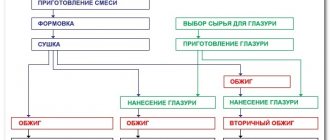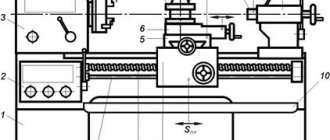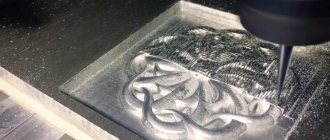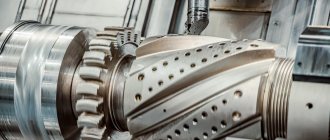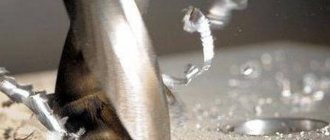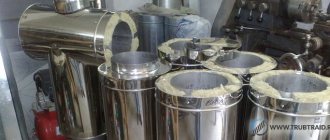A CNC machine is a high-performance hardware and software system designed for processing the following materials: metal, rubber, wood, plastic, leather.
The wide range of applications allows the equipment to be used for development in various business niches. If you are one of the craftsmen who know how to work on it, consider the option of starting a profitable business manufacturing a wide range of products at home.
Its advantages :
- Low starting investments from 150 thousand rubles.
- Availability of a minimum of equipment and tools
- Small space requirement
- Possibility of organization in your own garage or at home
- Wide target audience
- Freedom to choose a market niche
Minuses:
- Having certain knowledge and skills
- Independent search for sales channels
- Seasonality in most niches
business plan will help you avoid making mistakes at the start and correctly organize the process . It will allow you to evaluate the idea and decide on the concept, calculate the cost of products and the profitability of the business. Let's look at its components and some nuances of its activity.
Demand and competition analysis
The first thing you need to do is study the needs of potential clients for Internet services: Wordstat, Yandex.Vzglyad, as well as the offers and pricing policies of competitors. Think about how you can stand out from them, what additional services you can offer. For example, free delivery of orders, furniture designer services, home measurement, and others.
The versatility of the machine allows you to work with different niches and target audiences, both in the private and corporate spheres. Therefore, gaining a foothold in the service market will not be difficult. The demand for products made from natural materials is growing from year to year. In demand: pieces of wooden furniture, interior parts, original souvenirs, toys, musical instruments and others. All this can be produced on a universal CNC machine .
Her Majesty's furniture
It is made from valuable wood or MDF boards. This material is close in composition to natural wood, is easy to process and is inexpensive, it is more moisture-resistant and resistant to microorganisms. This is why CNC milling of MDF facades is in great demand.
They are easy to process, they can be cut and drilled, painted, laminated and veneered.
It is possible to make from an MDF panel:
- linings for armored doors;
- wall panels, with the help of which interior decoration is carried out;
- acoustic system housings;
- elements of cabinet furniture; countertops, wardrobes;
- the finished product for furniture makers (small decor) is then covered with film on a vacuum press.
Room
organize a mini carpentry workshop in your garage or a separate room in the local area if you live outside the city or have a dacha. In the absence of such an opportunity, suitable premises can be rented.
Required area: 20-40 square meters . The room must meet fire safety requirements, be heated and have forced ventilation. When expanding production, additional space will be needed for storage and drying of products.
What can be made on a machine
The milling machine allows you to work with various materials in addition to hard ones in automatic mode:
- Carrying out curved and figured cutting of wood
- Production of parts for furniture assembly
- Cutting various materials, including composites
- Decorating blanks
- Manufacturing of complex shaped parts
- Leather and rubber processing
This allows you to start a business by collaborating with entrepreneurs and third parties, supplying them with components, complex geometric elements, and miniature parts. In addition, on the machine it is possible to create unique goods in a single copy, products according to author’s sketches.
Work can begin in several directions:
- Cooperation with small and medium-sized businesses : furniture companies, construction and finishing companies, the advertising industry.
- Manufacturing of furniture decor and assembled furniture, chairs, wooden stairs, doors, trim and shutters
- 2D and 3D carving
- Production of signs, logos, individual samples of outdoor advertising
- Production of corporate, tourist and holiday souvenirs: decorative tableware, medals, memorial signs, magnets
- Development of master models for foundries
2. Fulfilling orders for individuals
- Making wooden toys, board games, kitchen utensils
- Carrying out engraving work on precious metals and stones
- Production of sculptures and souvenirs
- Production of interior items: lamps, panels, stands, photo frames, boxes
3. Launching your own linear production of a specific product that is in demand on the market: cutting boards, coasters, rolling pins, photo frames, etc.
It is worth experimenting with different types of products, quickly switching to producing a wide range.
Search for clients
In order for consumers to know about you and your business to develop, you need to launch advertising . This type of activity allows you to search for clients in both the private and corporate spheres. Due to the wide range of work performed, the following can be used as sales channels for products:
- Access to construction and finishing companies
- Servicing small furniture businesses
- Cooperation with advertising agencies
Sale of products to private individuals: owners of dachas, houses, families with children and other groups of the population
They promote products using their own website, groups on social networks , and specialized Internet sites. Word of mouth works great, distributing visits and booklets in places with high traffic, placing advertisements in elevators and entrances of houses. Be sure to use multiple marketing channels to attract as many customers as possible.
Hiring
If you organize a mini carpentry shop, you will need to hire a machine operator, a technologist, a carpenter, an auxiliary worker, and a driver to deliver orders. You can perform many functions yourself, and use the services of an accountant online, through outsourcing.
Knowing how to operate a machine, at the initial stages it is enough to have one assistant or perform all operations alone. You must register as a self-employed person or individual entrepreneur . The best option would be individual entrepreneurship.
To do this, contact the tax office with a passport, TIN, application, and pay a state fee of 800 rubles. Tax regime: simplified tax system with deduction of 6% from all income or 15% from net profit. Specified OKVED code: 43.32 suitable for joinery and carpentry work.
To receive large orders from enterprises, registering as a legal entity is more suitable. This will require the charter of a company with a capital of 10 thousand rubles, opening a current account and paying a state duty in the amount of 4 thousand rubles.
Table 2.7, Technical characteristics of the manipulator
| Manipulator model code VR-032 | YA-1NM321 | |||
| Number of axes | 6 | |||
| Axis tilt and rotation values | Mechanical arm | Rotation | Around the axis | + 155 degrees |
| Shoulder | Vertical | + 150 ~ — 100 deg. | ||
| Forearm | Horizontally | + 265 ~ — 180 deg. | ||
| Relative to shoulder | + 210 ~ — 65 degrees. | |||
| Mechanical wrist | Rotation | Standard installation | + 270 degrees | |
| Hanging installation | + 450 ~ — 90 deg. | |||
| Flexion | Front axis | + 90 ~ — 150 deg. | ||
| Turn | + 400 deg. | |||
| Manipulator working area | In the horizontal plane | Point P (see figure) | 7.11 sq.m x 310 deg. | |
| Point O (see figure) | 5.55 sq.m x 310 deg. | |||
| Maximum axis speed | Mechanical arm | Rotation | 140 deg/s | |
| Shoulder | 120 deg/s | |||
| Forearm | 140 deg/s | |||
| Mechanical wrist | Rotation | 250 deg/s | ||
| Flexion | 225 deg/s | |||
| Turn | 300 deg/s | |||
| Maximum load capacity | 32 kg | |||
| Positioning accuracy | no worse than + 0.15 mm | |||
| Axle stopping system | all axes | |||
| Degree of protection | IP54 (IP65) | |||
| Position of the manipulator during installation | Floor ceiling | |||
| Manipulator weight | 580 kg |
How much do you need to invest at the start?
The initial investment depends on the range of work performed and specialization. With a narrow list of services, you can get by with an inexpensive machine model and a minimum of tools. The costs in this case will be 150 thousand rubles, of which:
- To purchase a machine you will need at least 100 thousand rubles.
- For the purchase of equipment for processing materials - 10 thousand rubles.
- To pay for the rent of the premises - 30 thousand rubles.
- For advertising – 10 thousand rubles.
Current expenses will include: purchase of consumables, payment of utility bills, rent, advertising, which will amount to about 40 thousand rubles.
For greater productivity, you will need a complex machine model costing 200 thousand rubles. and equipment with furniture for 25 thousand rubles. Monthly expenses will also increase to 100 thousand rubles.
Having suitable premises and tools and purchasing used equipment will allow you to save. When purchasing a machine, study its technical and operational characteristics and operational capabilities. Choose equipment from reliable manufacturers who are responsible for the quality of the product.
What can you do with a CNC plasma cutter at home?
Over the past few years, plasma cutting has become actively used both in large production and in small private workshops. A plasma cutter provides precise, high-quality cutting that is completed relatively quickly and at low cost. Thanks to these qualities, a CNC plasma cutter can be a good investment for developing your own business.
CNC plasma cutting machine for home business
Buying a plasma cutter for a young company will be a good investment with a high prospect of profit. The cost of CNC plasma cutting machines starts from $600. But their technical characteristics are very modest.
For example, the maximum thickness of the processed metal sheet. Therefore, let’s take into account the business plan’s calculations the average cost of a set of production equipment of about $2,000, excluding the cost of consumables.
Approximate calculation:
- initial investment (plasma cutter + monthly expenses) – 3000 USD;
- monthly income – 1000-1300 USD;
- payback period – 5-7 months.
This calculation is based on a standard machine operating during an eight-hour workday. Average calculation item by item without taking into account the cost of the equipment itself:
- salary of a CNC plasma cutter operator – 15 USD per day;
- rental of premises for equipment (minimum 40 sq. m.) – 140 USD per month;
- electricity costs: plasma source (9 kW/hour), compressor (3 kW/hour), machine (4 kW/hour) and other (5 kW/hour) – 21 kW/hour * 0.7 (efficiency) * 0 .06 USD/kW * 8 hours = 7 USD per day.
- consumables (nozzles, electrodes, etc.) – 40 USD per month.
The total cost for a fully loaded production of sheet metal products will be approximately 28 USD per day.
Under ideal production conditions, at maximum load in an 8-hour work shift, a plasma cutter can generate a profit from 500 USD to 1100 USD, but taking into account the forced downtime for replacing consumables, changing sheets and servicing the machine, 30% can be deducted from this amount, as well as daily 28 USD.
The total monthly income calculated for 20 working days will be from 9,500 USD to 15,000 USD. But this is the amount of income for ideal conditions. At the beginning of business development, plasma cutting services will bring several times less - about 2,500 USD.
Choosing a CNC plasma cutter for home production
What criteria should you pay the most attention to when choosing before purchasing an inexpensive plasma cutter for home production of sheet metal products? Before making a purchasing decision you must:
- Indicate to the manufacturer the type and thickness of metal that the tool will be able to cut.
- Find out whether it is possible to work with a plasma cutter in the cold (for most models, in cold weather it is necessary to place the device and the compressor in a warm room).
- Determine the type of cutting - plasma arc or plasma jet cutting:
Also important technical parameters and characteristics of the device:
Plasma torch cutting speed under CNC control
This parameter determines the performance of the plasma cutter. The cutting speed depends on the type and thickness of the material relative to the specific voltage of the plasma electric arc. Naturally, the higher the cutting speed, the more efficient the cutter will be.
Maximum cutting current
The amperage of a plasma cutter is a key indicator of its power, efficiency, and the maximum thickness of materials it can cut. This figure for plasma cutters varies from 5 to 160 A. Modern plasma cutters allow you to smoothly adjust the current strength over a wide range.
Duty cycle
This is another extremely important parameter of the device that determines the pace of work. The duty cycle determines how quickly the torch will overheat and how soon it will need to take a break to cool down the temperature of the operating components. The duty cycle is determined by a percentage of 10 minutes of the time the device can operate and the time within which it must stop operating.
The work cycle should consist of at least 35% work and, accordingly, 65% idle time. The higher the percentage of work relative to idle time, the more efficient the device will be. Professional plasma cutters are capable of working at 60% or higher.
Plasma gas parameters
Most plasma cutters use compressed air between 4 and 7 bar. The higher the pressure, the greater the power of the plasma jet and, consequently, the higher the quality and speed of cutting.
Plasma torch cooling
Handle cooling is an important aspect to pay attention to. Most mid-size plasma cutters have the handle cooled by compressed air from a compressor, while larger industrial-type plasma cutters, due to their higher amperage and more heat generation, have the handle cooled by liquid from a built-in cooler.
Thanks to this business idea, you can independently organize home production of a wide range of products.
All you need is a computer machine and a little experience in working with vector graphics programs, CAD systems, which you can learn on the Internet using online courses or video lessons. And then just scale your manufacturing business.
Metal products are reliable and durable. When acrylic paint is applied to finished metal products, their warranty period starts from 15 years.
How much can you earn
The amount of income depends on the cost of the processed material, which can range from 20 to 500 rubles. per meter and extra charges of 50-100% . At an average speed, up to 3 thousand meters of material can be processed per shift, which will allow you to earn 170 thousand rubles. per day, and the amount of net profit for the month will be 370 thousand rubles. Thus, the initial investment will pay off in 2-3 months.
The organization will bring additional income:
- Thematic master classes, training courses
- Video lessons on the Internet, consultations
Table2.8, Controller specifications
| Position | Specification | |
| Number of controlled axes | 6 (max 27) | |
| Program memory capacity | 20,000 points and 20,000 cycles | |
| Training panel | 7 inch TFT LCD graphic. display | |
| External program memory | PCMCIA card(Panasonic SD card) | |
| Input/output ports | Entrance | 40 points (max 504) |
| Exit | 40 points (max 504) | |
| Status signals input/output | Entrance | 1.Start 2.Stop, 3.Error, 4.Work 5.Training, 6. Servo on. |
| Exit | 1.Work, 2.Stop, 3.Emergency stop, 4.Motion, 5.Teaching, 6.Servo on, 7.Readiness, 8.Accident | |
| Input/Output Port Settings | Entrance | Optocoupler DC24V 12mA |
| Exit | Transistor with hidden emitter | |
| Interface | Education panel | IrDA, PCMCIA |
| Controller | RC-232C, RS-422 | |
| Supply voltage | 3-phase 220V + 10%, 6 kVA | |
| Dimensions | 420x600x530 mm (VR-004, 006, 006L, 008) 420x630x530 mm (VR-008L, 016, 032) | |
| Weight | 48 kg (VR-004, 006, 006L, 008) 73 kg (VR-008L, 016, 032) | |
| Cable length between manipulator and counter. | 4 m | |
| Cable length to teaching panel | 10 m |
Possible business problems and risks
Since the machine is controlled by numerical control, the operator practically does not take part in its operation. Therefore, the influence of the human factor is not relevant for this business. Common risks include:
- Material defects or poor quality: purchasing from a regular, reputable supplier will help you avoid the problem
- Increased competition: high quality products, attractive prices, additional services, and product exclusivity will help minimize the risk
- Lack of demand: indicates insufficient marketing activities, incorrectly chosen niche or pricing
With the right approach to business, risks can be avoided or their impact can be minimized.
The peculiarity of the business is that without ensuring stable sales volumes and established infrastructure, production should not be expanded. It is better to consolidate success by developing it, improving the quality of products, establishing production chains with partners, and retaining customers.
Controlling metal cutting using a computer
Modern IT technologies have entered almost all areas of modern industry. The machine is controlled using special software that interfaces the computer with the machine.
The process accuracy can be set to 0.1 mm. This is more than enough for the production of technological parts. What can we say about ordinary stylistic materials.
Thanks to preliminary simulation of material cutting, it is possible to ensure that, in principle, there will be no waste left. Meanwhile, reducing the amount of production waste has always been the main goal of any production.
There are machines that can use a laser not only to cut metal, but also to weld it.


